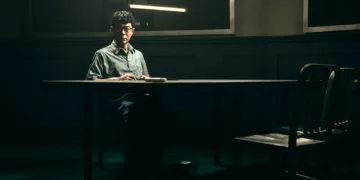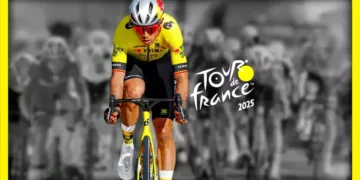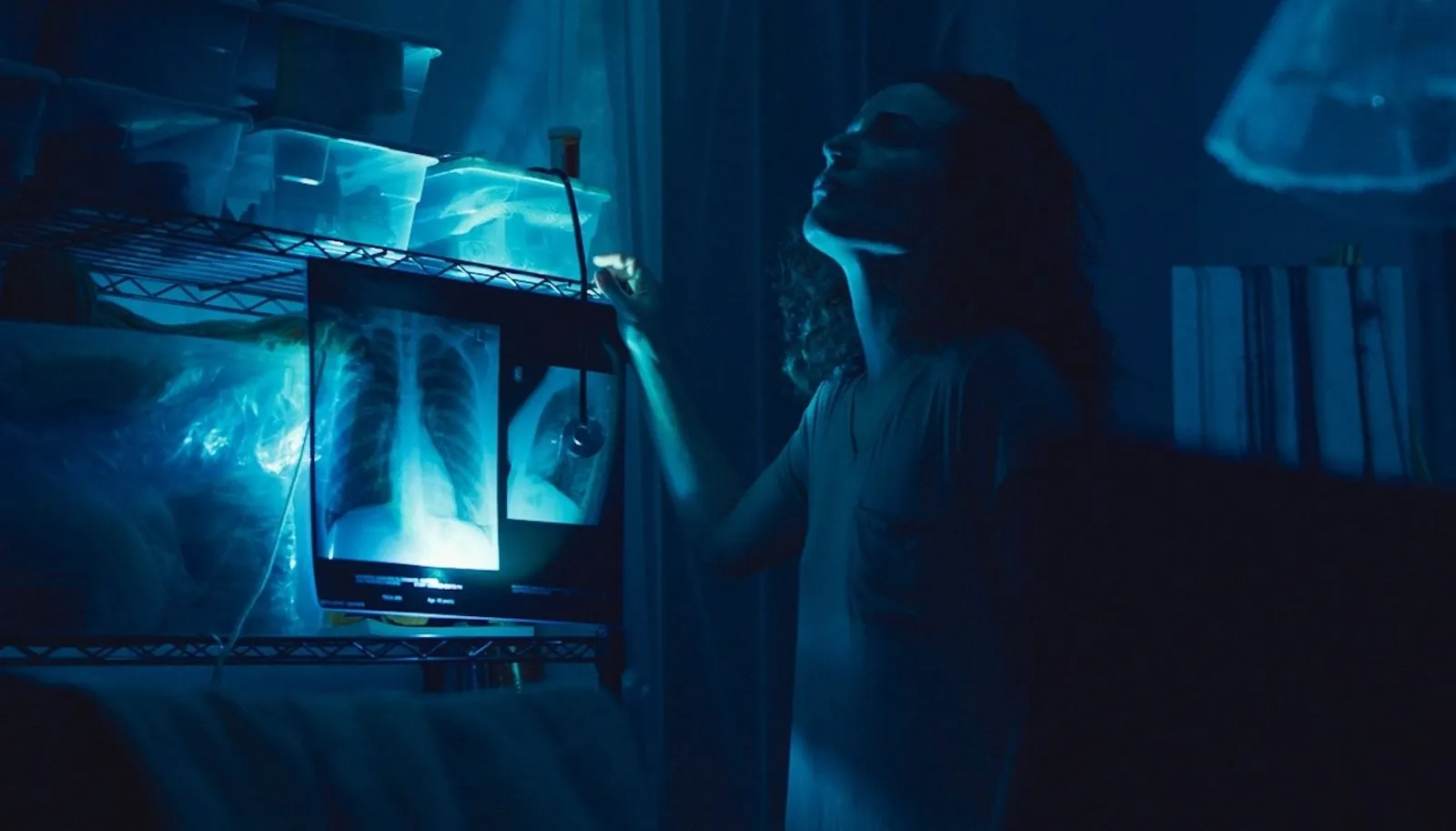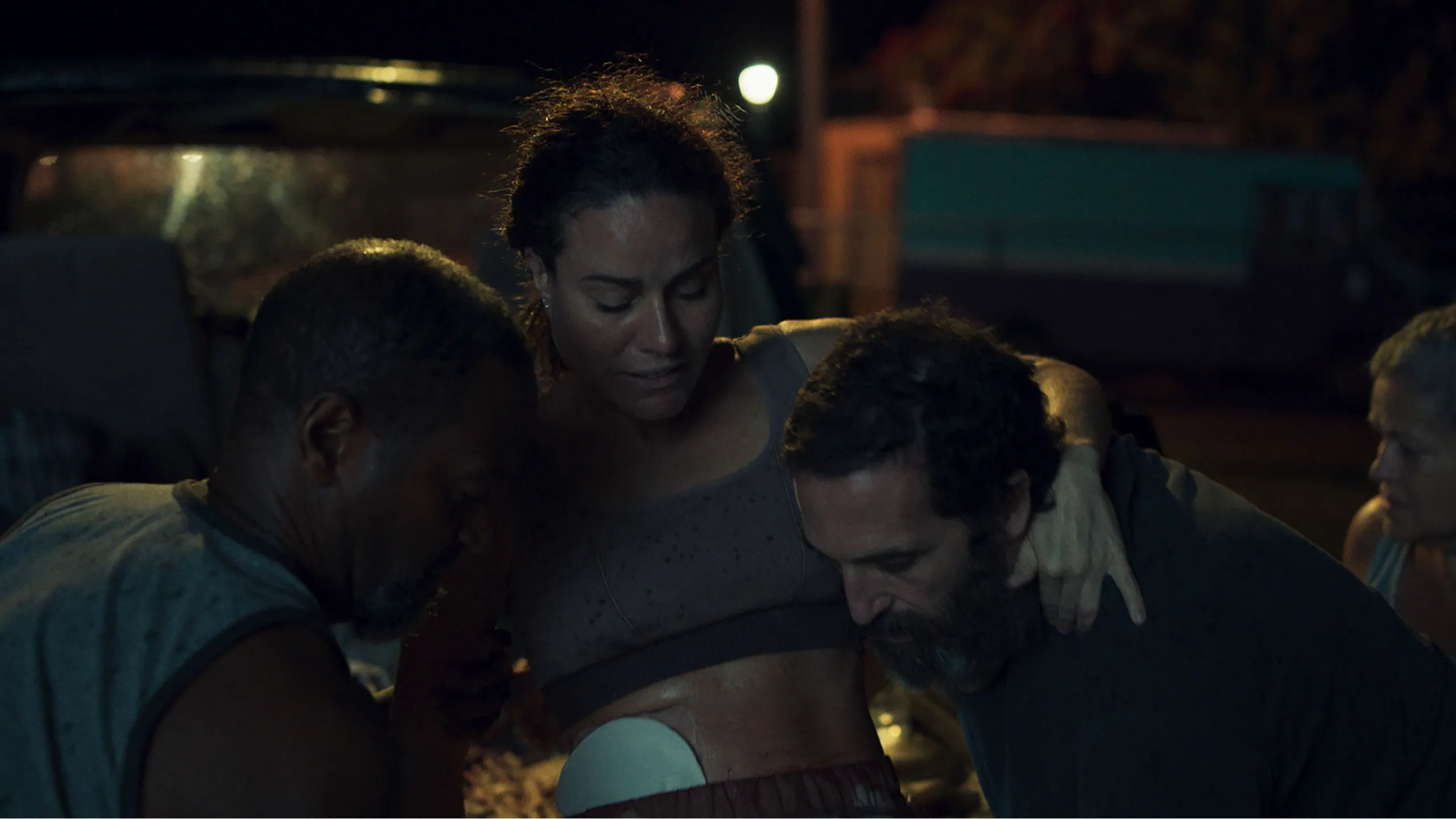Glorimar Marrero Sánchez’s The Fishbowl unfolds against the lush yet scarred backdrop of Puerto Rico, tracing the final chapter of Noelia (Isel Rodríguez), a forty-year-old artist confronting terminal cancer. After a tense sunrise scene in her San Juan apartment—where a daydream in the bathtub yields to the stark reality of blood seeping from her colostomy bag—Noelia makes a decisive pivot: she will spend her remaining days on Vieques, the island of her birth.
Sánchez adopts a reflective rhythm, allowing each shot of Noelia’s journey across emerald seas and through bioluminescent bays to accumulate emotional weight. The film’s tone is hushed yet insistent, balancing quiet moments of family warmth with the undercurrent of political grievance.
As Noelia moves through crowded kitchens, protest encampments and moonlit beaches, the narrative weaves her personal reckoning with the legacy of military contamination. From the first frame to the ferry’s wake, The Fishbowl positions itself as a study in autonomy—how one life’s final act can mirror an island’s call for renewal.
Characters & Performances
Isel Rodríguez anchors the film with a performance that registers on every level: the physical toll of pain etched into her posture, the sharp tilt of her head when she refuses help, the sudden spark of laughter during a spontaneous karaoke scene.
Her frequent silences—lingering gazes or a still hand brushing water—speak volumes about denial and defiance. Key beats include her startled awakening in the tub, the terse exchange with her doctor in the emergency room, and the moment she packs her bags in San Juan, leaving Jorge’s pleas hanging in midair.
Magali Carrasquillo’s Flora offers a counterpoint of steadfast calm. As mother and local activist, she grounds Noelia’s turbulence with gentle pragmatism—her hands busy cleaning up ordnance while her voice carries the history of the island.
Maximiliano Rivas portrays Jorge as well-meaning but overwhelmed, his clinic-born solutions clashing with Noelia’s urge for self-determination; their conversations pulse with unspoken tension. Modesto Lacén and other friends on Vieques fill out the community: they share meals, protests and whispered confidences, giving Noelia a sense of belonging that transcends medical charts.
Themes & Narrative Threads
At its core, The Fishbowl uses illness as a mirror for ecological injury. Noelia’s metastasized cancer and Vieques’s soil poisoned by decades of naval exercises reflect one another: hidden, insidious, refusing to yield. The film positions her secrecy about her prognosis against the islanders’ long-suppressed outcry, suggesting that both personal suffering and environmental harm thrive under silence.
Noelia’s trajectory charts a movement from denial to agency. In San Juan she masks pain with routine; on Vieques she embraces uncertainty. Water imagery threads through this arc—her emergence from the bathtub recalls amniotic origins, while her nighttime boat ride across glowing waters underscores vulnerability and release. Moments of immersion offer brief reprieve yet underscore how deeply she and the island are wounded.
The environmental justice narrative emerges organically as Noelia joins local protests. Scenes of unexploded bombs buried under coral beds parallel her own buried anguish. Conversations with campaigners feel lived-in: she records marches for an eventual self-made documentary, turning her decline into testimony.
A low rumble of an approaching hurricane becomes a silent partner in Noelia’s story. The threat of Irma looms like a second illness, tightening narrative tension without veering into melodrama. Each gust of wind and flicker of lightning amplifies her resolve to chart her final moments on her own terms.
Cinematic Craft & Emotional Resonance
Sánchez’s direction favors long takes and patient framing. She lets scenes breathe: a lingering shot of Noelia’s hand tracing a hurricane map, or unhurried coverage of her mother tending to rusted shells. Ambient sound carries the film—waves lapping, wind through palm fronds, distant chants at a protest—often superseding musical score and placing the viewer inside each moment’s texture.
PJ López’s cinematography moves from slate gray interiors to the vivid aquamarine of Vieques. Club scenes glow with teal undertones, isolating Noelia in a cocoon of light, while her nighttime ocean sojourns are lit by moon and bioluminescence, rendering her silhouette fragile against vast darkness.
Editing stitches together daydreams, documentary-style footage and straightforward chronology to map Noelia’s shifting consciousness. Abrupt cuts—her sudden decision to leave San Juan—can startle, reminding us that life’s turning points often arrive without warning.
The sparse musical cues, drawn from native rhythms and understated piano motifs, heighten intimacy, while moments of silence emphasize withdrawal or defiance. A scene in which Noelia simply listens to rain on a tin roof lingers in the mind.
By privileging emotional truth over sentimentality, The Fishbowl crafts communion in small gestures: a shared drink, a mother’s touch, an activist’s chant. These instances of togetherness echo long after the credits roll.
The Fishbowl premiered at the 2023 Sundance Film Festival in the World Cinema Dramatic Competition.
Full Credits
Director: Glorimar Marrero Sánchez
Writer: Glorimar Marrero Sánchez
Producers: José Esteban Alenda, Amaya Izquierdo, Glorimar Marrero Sánchez
Cast: Isel Rodríguez (Noelia), Modesto Lacén, Magali Carrasquillo, Maximiliano Rivas, Anamín Santiago, Idenisse Salamán
Director of Photography (Cinematographer): PJ López
Editor: Clara Martínez Malagelada
Composer: Sergio de la Puente
The Review
The Fishbowl
The Fishbowl’s patient storytelling and Isel Rodríguez’s haunting performance cast a quiet spell, marrying personal defiance with the island’s unspoken scars. Marrero Sánchez’s restraint and López’s vivid palette reveal emotional truths without excess. Though its pace occasionally slows, the film’s meditative tone and thematic pairing of illness and contamination resonate deeply.
PROS
- Isel Rodríguez’s performance conveys raw vulnerability and strength
- Thoughtful pacing that allows emotional beats to land
- Rich visual contrasts between urban and island landscapes
- Subtle sound design that heightens intimacy
- Seamless blend of personal drama with a political edge
CONS
- Occasional lulls in momentum
- Elliptical jumps may feel abrupt
- Limited use of its hinted magical-realism elements
- Secondary characters under-explored at times



















































